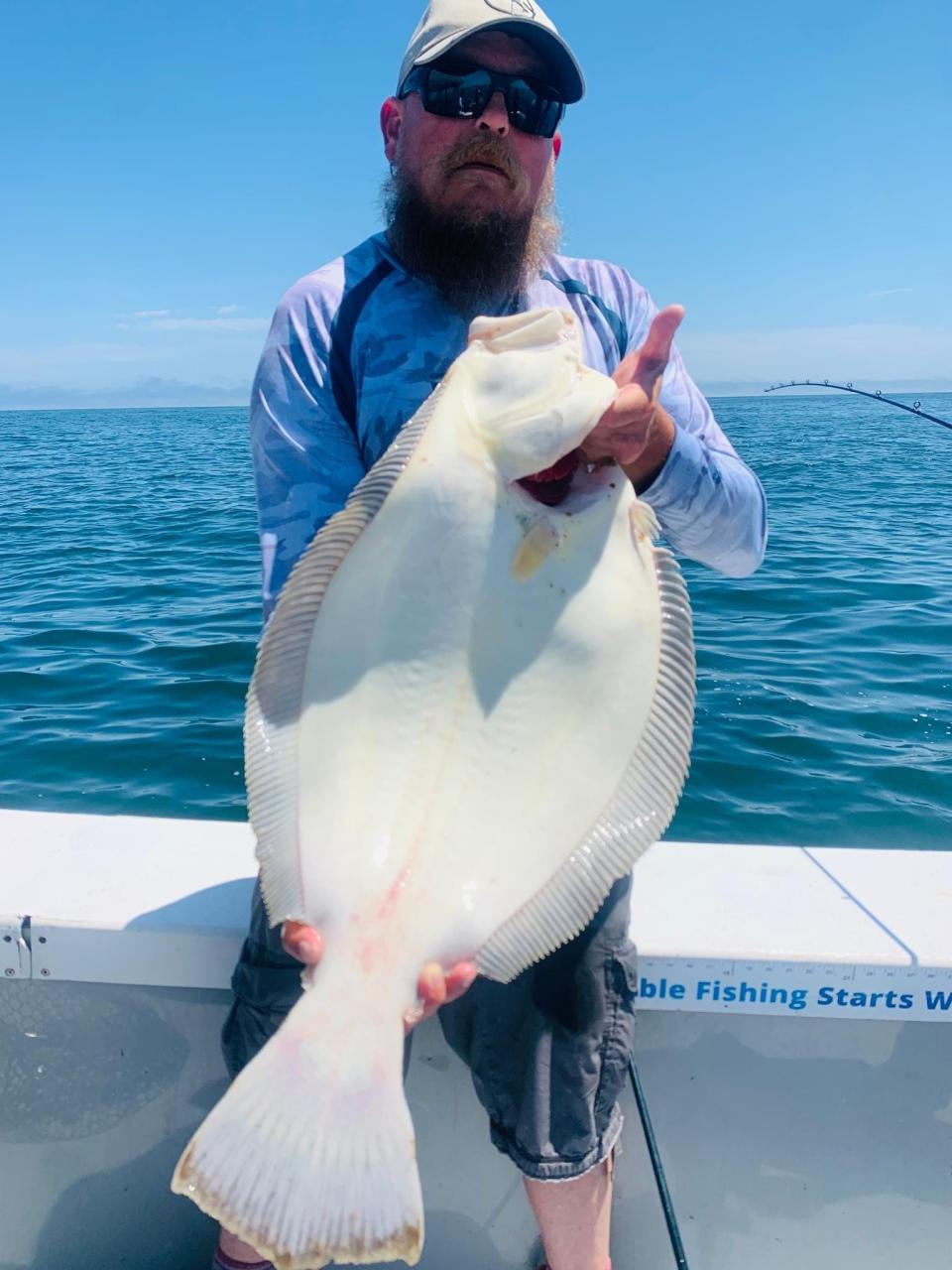Water is heating up fast. What does that mean for fishing?
On Wednesday, the water temperature in Narragansett Bay was 75.6 degrees Fahrenheit, compared to a 10-year July average of 71.2 degrees. So, no doubt the water in our area is heating up.
Warm water can affect fishing in a negative way. Scientists say that marine heat waves, such as what we are experiencing in our ocean, can disrupt ocean ecosystems and the coastal communities that rely upon them. Weeks, months or years of unusually warm waters can cause mass die-offs of fish, marine mammals and seabirds, disrupt food webs and fisheries, bleach corals, spur harmful algal blooms and wipe out seaweeds.
More: Fishing for stripers? Bite hasn't been this good in years, says one local angler
As scientists around the world sound the alarm about record sea-surface temperatures, a new experimental National Oceanic and Atmospheric Administration forecast system predicts that half of the global ocean may experience marine heat wave conditions by the end of summer.
The surface temperatures of about 40% of the global ocean are already high enough to meet the criteria for a marine heat wave — a period of persistent anomalously warm ocean temperatures — which can have significant impacts on marine life. The new forecast at Marine Heatwaves: NOAA Physical Sciences Laboratory projects that it will increase to 50% by September.
“No doubt, we’re in hot water,” said Dillon Amaya, a PSL research scientist and a co-lead of NOAA’s June 2023 marine heat wave experimental outlook. “In our 32-year record, we have never seen such widespread marine heat wave conditions.”
“Normally, we might expect only about 10% of the world’s oceans to be ‘hot enough’ to be considered a marine heat wave, so it’s remarkable to reach 40% or 50%, even with long-term warming,” Amaya said.
More: 8-year-old fly-tying instructor Rosie Clifton embodies the spirit of fishing

Where’s the bite?
Tuna. “We have a strong tuna bite at Tuna Ridge. All along the north line of the Dump, anglers caught both yellowfin and bluefin tuna this past week,” said Elisa Cahill of Snug Harbor Marina, South Kingstown. “The tuna bite is exceptional, both school tuna and giant bluefin tuna,” said Dave Henault of Ocean State Tackle, Providence. Declan O’Donnell, of Breachway Bait & Tackle, Charlestown, said: “Tuna reports were strong last week, with most bites coming on the troll. SE direction off Block Island.”
Summer flounder (fluke), black sea bass and scup. “Areas from 35-55 feet of water with some structure seem to be producing well for fluke. Fluke are also chasing sand eels, so try using some chartreuse colored baits and smaller presentations. Fishing for black sea bass seems to be picking up and there are plenty of scup around,” O'Donnell said. “Fluke fishing has been very frustrating for anglers in the Bay. However, the scup bite remains strong in the Bay,” said John Littlefield, of Archie’s Bait & Tackle, Riverside. Cahill said, “Fluke fishing south of Block Island is outstanding with a strong bite holding along the southern coastal shore. Dillon Conti, my 5-year-old nephew, caught a 5-pound fluke fishing off the Center Wall at the Harbor of Refuge with his father, Matt. “Fluke fishing is now in deeper [and] cooler water with a 30-inch fish caught this weekend by John Lee off Point Judith," Henault said. "And the scup fishing remains strong."
“Striped bass fishing in Providence and Pawtucket is slow. However, anglers fishing at night are catching keeper fish. And, at the Cape Cod Canal, customer Garry Morin caught above-slot-size fish three days in a row with soft-plastic lures by Al Gags,” Henault said. “Fishing continues to be outstanding at the Island," Cahill said. "However, it is hard to catch a slot fish there [28 inches to less than 31 inches]. So, if it is a keeper you want, anglers are catching them off Point Judith or along the costal shore and off the breachways. The back ponds are producing keepers, too." O’Donnell reported: “The breachways and shore spots have been producing some fish but boaters have a bit of an edge fishing live eels out on deeper structure and out at Block Island. There is a better shore bite early of late in the day. Bass and blues have been seen blitzing on sand eels along the beaches and in the salt ponds.”
Blue crabs have been abundant at 100 Acre Cove, Barrington, said Littlefield. And this weekend in Apponaug Cove, Warwick, where I keep my boat, blue crabs were abundant clinging to dock piles just below the surface.
“Freshwater fishing for largemouth bass continues to be good," Henault said. "Most anglers are using shiners with success. Waterman Lake, Greenville, is producing for customers. Now the freshwater bite is in cooler water — shaded areas or deeper water."
Dave Monti holds a captain’s master license and charter fishing license. He serves on a variety of boards and commissions and has a consulting business that focuses on clean oceans, habitat preservation, conservation, renewable energy and fisheries-related issues and clients. Forward fishing news and photos to dmontifish@verizon.net or visit www.noflukefishing.com.
This article originally appeared on The Providence Journal: Warming ocean waters bad news for fish and fishermen

